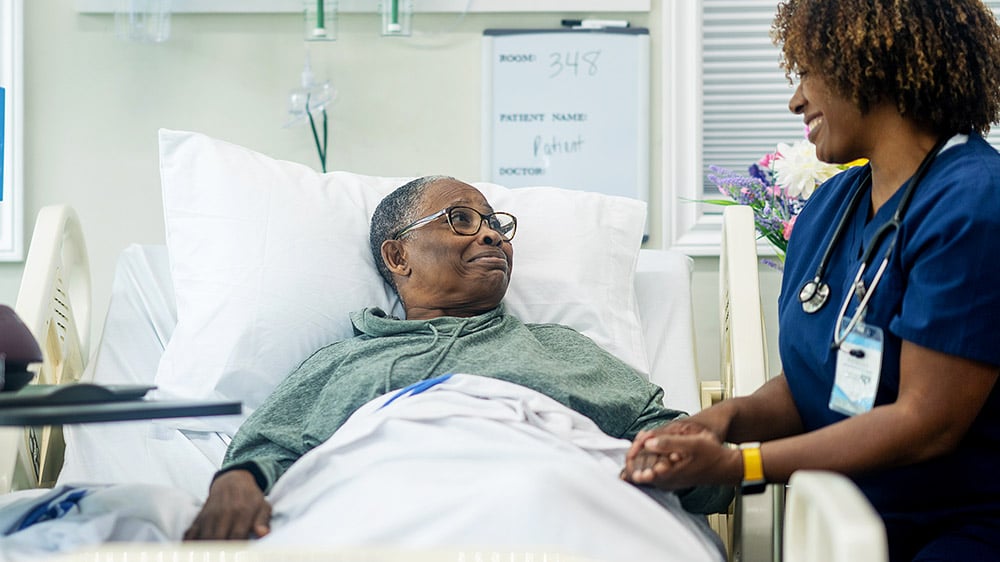
This post originally appeared on the CereCore blog.
We are at an unprecedented time in our history, and much of the impact of COVID-19 has not been experienced in our lifetime. Most health systems have well-established crisis and disaster plans that encompasses IT, but these plans haven’t been tested to this degree until now.
This article is intended to provide basic information with regard to initiating and adjusting these plans to deal with the current situation in our nation. Our recommendations include the following sections:
- Establishing a central command and communication center
- Maintaining reliability and stability of all IT systems
- Increased patient communication via different electronic mediums
- Improve or accelerate telemedicine/telehealth rollout and availability at all locations
- Implement telecommuting for all employees that are eligible
- Provide ample elbow support in the critical areas of the hospital
- Tracking metrics in key statistics and immediate response systems
Establishing a command center
A command center allows a coordinated response to COVID-19 events and activities, such as those offered in the CDC Coronavirus Disease 2019 (COVID-19 Hospital Preparedness Assessment tool. It also establishes a central location for all communications to be coordinated 24/7. The command centers will also be used for Business Continuity and Disaster Recovery programs and will coordinate related emergency management activities.
The command center will be accountable for establishing policies and procedures when dealing with internal employees, patients and address technological needs. CereCore also recommends that organizations consider the following actions:
- Identify all resources for emergency response who will be accountable for each department. These individuals will be the resources within the command center structure. You must identify ample number of resources in shifts to be able to provide 24/7 support.
- Develop a rapid response process to accelerate changes required across the enterprise. This process must provide direct access to senior management with specific details to make critical decisions in timely manner.
- If the health system is spread across large geographic areas, multiple command centers must be established with one command center acting as the primary unit to alert and facilitate immediate communication across command centers.
Maintain IT systems and deprioritize non-essential projects
One of the primary responsibilities of the IT department is to ensure stability of systems and reducing activities that impact the availability of the systems, such as upgrades and patches that are non-essential to the operation. Senior management should prioritize all IT activities underway and shut down all projects and activities that are non-essential and redirect all staff to dealing with COVID-19 activities.
This is an ‘All Hands on Deck’ moment for IT, and teams must be able to respond to the needs of the organization in a prioritized manner.
Increase patient communication
During these uncertain times, the best tactic to ease concerns of patients and the general public is to increase communication.
The CDC continues to update their guidance and resource documents for the community, and properly educating patients on how your organization is handling these protocols and what patients should do can minimize the risk of transmitting the illness. Add appropriate messages to the internet and intranet web sites, EHR systems, patient portals and social media platforms to facilitate the communication.
The communication should include instructions on symptoms of the illness, how to self-screen and instructions on what to do if they demonstrate some of the symptoms including the risks associated with traveling to countries that are impacted with COVID-19.
It is a good practice to offer push notifications to patients if they choose alerts of the latest information about COVID-19. It is critical to also educate the resources at the call centers to be able to address the questions from patients and to expect a dramatic increase to the call centers. One of the main objectives of a good communication plan is to maintain the communication, make sure it is updated, accurate and timely.
To do that, CereCore recommends the following actions:
- Assign key resources to the communication protocols and make sure they stay updated and promote the appropriate information to the public.
- Have a streamlined content approval process to both have an opportunity to review and to be able to promote information quickly.
- Educate the patient facing departments such as scheduling, registration and clinical staff regarding clear instructions on how to triage COVID-19 patients, notify the correct resources and track these patients appropriately in the system so that correct metrics can be reported.
Accelerate telemedicine availability
In order to minimize the exposure to your clinical and administrative resources, accelerate the availability of telemedicine of your organization.
This would include remote screening of patients or the ability to screen or test them in isolation as needed. There are simple steps to take to facilitate telemedicine by ensuring adequate bandwidth at locations, availability of video conferencing, integrating teleconferencing into major systems such as an EHR, and educating staff on how to leverage these systems in conjunction with their own devices.
Finally, and especially if you have not rolled out telemedicine, contact the right vendors to expedite the rollout and ensure ample licenses based on the population you serve and the resources at the hospitals.
Implement telecommuting immediately
A majority of the resources that work within shared services, such as IT, purchasing, finance, etc. can work remotely.
To reduce the risks to your employees, you should consider initiating telecommuting for these employees as soon as possible. To do this, your organization needs the following:
- Ability for your employees to work remotely. This includes having a laptop, cell phone, ample bandwidth, ergonomic and isolated work space for improved productivity, etc.
- Policies and procedures on what is expected of each employee while working remotely.
- The biggest challenge is security and access to the right applications while working remotely and this may take some time to facilitate.
Provide at-the-elbow support
Although we recommend having most of the non-essential IT support work remotely, we also recommend having ample at-the-elbow support in the wards and other critical locations in case clinical staff members need immediate help.
Time is of the essence, and having the right resources will expedite services or access to the right information. You should ensure the IT staff is authorized to provide laptops, Workstations on Wheels (WOW), and other technologies as needed to expedite access.
Track and report the correct metrics
One of the most effective means that IT can assist the organization is to track the right metrics and making these reports available to all key staff, as well as support COVID-19 cases reported to the CDC.
Examples of the types of metrics that need to be tracked are:
- Number of COVID-19 tests being performed by facility based on request or need.
- Number of positive and negative test results and trends, especially based on geography.
- Number of inpatients with positive and negative results based per locations/ward.
- Number of outpatients, ED and inpatients and trends.
The recommendations above are some of the activities that IT can undertake to assist in this difficult time. In addition, IT organizations should review and augment their current disaster recovery and business continuity plans in light of the learnings from our current scenario.
CereCore remains committed to support health systems with IT and EHR support services, and to lend technical expertise in any way we can to ensure patient care across our nation.
Read how MEDITECH is supporting healthcare organizations during the coronavirus outbreak.




